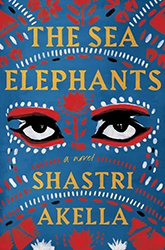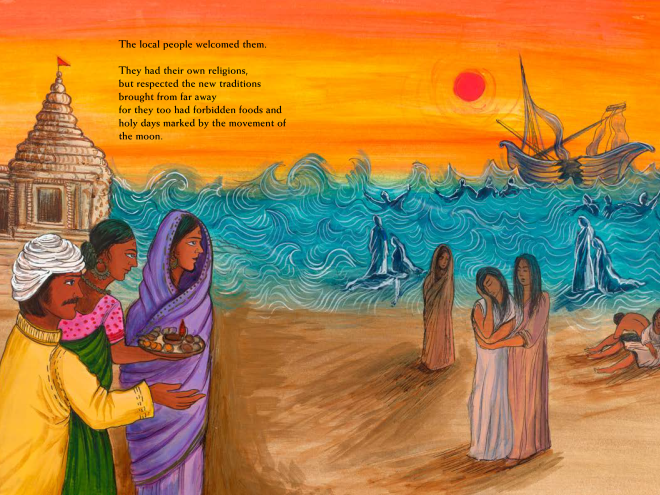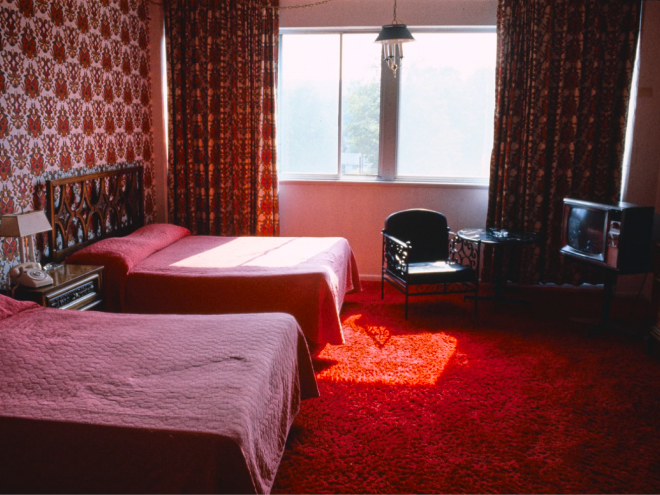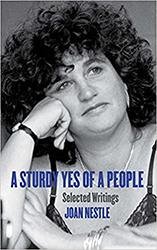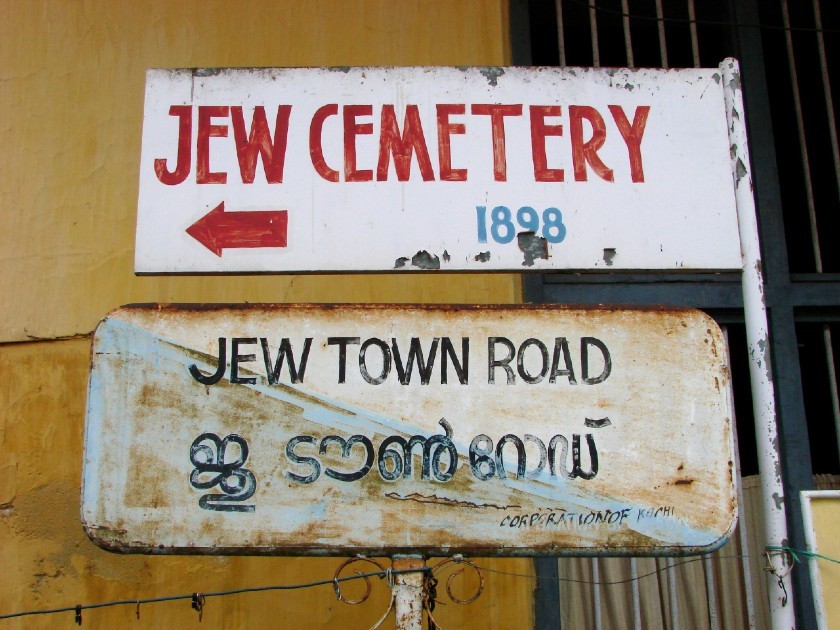
Sign for the Jewish Cemetery and Jew Town Road in Old Cochin, Kochi, India. Photo by Adam Jones adamjones.freeservers.com
Like everything profoundly beautiful that transformed my life, I discovered Jew Town when I was out searching for something else. Back in 2016, when my novel The Sea Elephants was a work-in-progress, one of its key characters, Marc Singer, the love interest of the protagonist, was an American expat living in India. I sought to deepen his presence in the text by giving him a historical association with his new geography. I started to study the history of migrations to the subcontinent, and learned about the long history of Jewish migrations to India. So I decided I wanted Marc’s family to migrate from New York to Jew Town, located in the southern coastal town of Kochi. And in the summer of 2017, I made a research trip to Kochi.
______
Jew Town is flanked by the Arabian Sea on one side, the Kaveri river on the other. I walked into one of the many antique shops in the district on my first day. I was on a graduate student salary and couldn’t afford to buy anything but that didn’t dissuade the friendly owners from holding a conversation with me. The shops, I learned, were former residences of Jewish families. Now the owners live upstairs and the downstairs, once a residential courtyard, hosting large family gatherings, is where they ply their trade.
I learned, prior to my tip, that the first written records of Jewish migrants in Kochi date to after the destruction of the Second Temple. The legendary Jewish traveler Benjamin of Tudela wrote about these early settlers during his travels in the late 1100s and the cemetery of Jew Town still holds some of their gravestones.
As a translator and writer, I was especially thrilled to discover that they developed their own language, Judeo-Malayalam, a mixture of the local language and Hebrew, and over time, traditional Jewish stories changed in Judeo-Malayalam folklore to include the Malabar landscape. In the climactic battle of David and Goliath, for instance, a mosquito enters the helmet of Goliath and when he removes it, David flings a coconut at his head. It explodes on his temple and drenches his face with its water and kills him.
Nearly everyone I spoke to in Jew Town mentioned one name. Sarah Cohen. And I knew I had to meet her. I found her sitting near the window of her home facing the street, wearing a bright red house dress and matching kippah. She welcomed me into her home. Sarah, who was ninety-four at the time, was born in Kochi. After the nearly simultaneous freedom of India and Israel,1947 and 1948 respectively, many Jewish families left Kochi and migrated to Israel, but she decided to stay. With a sweep of her hand, she pointed to the bustling street and said, “This is my home.”
She showed me her collection of prayer books, the menorah that she lit every Friday for Sabbath, and pictures of her with her husband, who’d passed away in 1999. I also saw the kippahs and challah covers that she’d hand-embroidered, distinct in the way they incorporated traditional Indian patterns onto traditionally Jewish fabric. I thought of my novel after I left her place — I thought of Marc. His parents would’ve been friends with Sara Cohen. She might’ve made Marc, closeted and feeling displaced by his parents’ unexpected decision to migrate from New York to Jew Town, feel at home.
I saw the kippahs and challah covers that she’d hand-embroidered, distinct in the way they incorporated traditional Indian patterns onto traditionally Jewish fabric
Two years after I visited her, in 2019, Sarah passed away. She had no children. Thaha Ibrahim – who became, after her husband’s death, her caregiver – turned her home into a museum.
A second wave of Jewish migrants came to Kochi in the sixteenth-century. They were fleeing forced conversion in Iberia and religious persecution in Spain and Portugal. They became prosperous by way of the spice trade and built the Paradesi Synagogue in 1568. It was destroyed during the Portuguese attack on Kochi, but under the tutelage of the Raja of Kochi, it was rebuilt in 1665. I was surprised to note that the synagogue requires you to take off your shoes when you enter, a practice typical in Hindu temples. The interiors are decorated with latter day additions to the seventeenth-century structure: a Belgian chandelier, the ner tamid that burns above the podium where the torah is read, and the blue tiles on the floor, imported from Canton in the eighteenth century, each depicting a different image. These were tiles that Salman Rushdie calls, in The Moor’s Last Sigh, the “ceramic encyclopedia of the material world” where “pleasure gardens were laid out in blue, blue horsemen pranced beneath lamplit windows and blue-masked ladies swooned in arbors” (84).
During my stay in Kochi, I learned that there were tensions between the early settlers, whom the British called ‘Black Jews’, and the later settlers who were called ‘White Jews’ and given prominent positions in the Empire. Nowhere else was there a caste system within a Jewish community. There was a time when Black Jews sat at the back of the synagogue. Abraham Barak Salem, a Zionist lawyer, led a peaceful protest outside the synagogue, demanding equal rights — which were granted. He was called the Jewish Gandhi by the locals. Soon after, a Black Jew became the synagogue’s rabbi, and over time, the social divide between the groups decreased.
______
The intersection I found in Sarah Cohen’s embroidery and in the practice of taking your shoes off to enter Paradesi Synagogue is also found in the art of Siona Benjamin, an Indian Jewish artist. Her artwork, “Finding Home”, for instance, depicts a goddess-like figure — reminiscent of Kali — her many hands turning into the handles of a menorah. The painting introduced me to the idea of tikkun olam which stems from a creation myth in Jewish mysticism: a vessel containing the divine light is broken and Adam is tasked with repairing the broken vessel and restoring its light. Today, it connotes the social act of repairing a broken world. And it inspired me to, in my novel, celebrate community: for even when the two main characters are shunned for being Other, their found family holds, heals, and celebrates all their fractured selves.
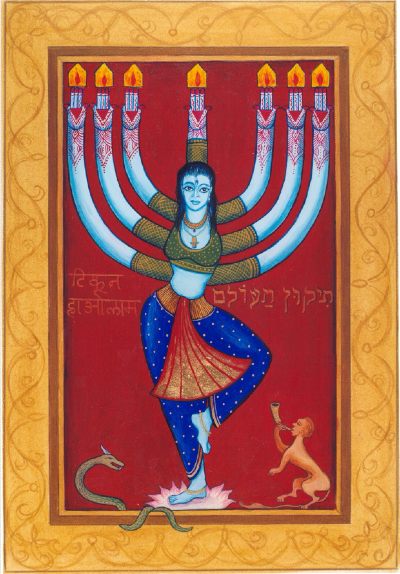
Art by Siona Benjamin
Shastri Akella holds an MFA in Creative Writing and a PhD in Comparative Literature from the University of Massachusetts Amherst. His writing has appeared in Guernica, The Master’s Review, Electric Literature, the Los Angeles Review of Books, The Rumpus, PANK, The Common, and World Literature Review, among others. The Sea Elephants is his debut novel.
